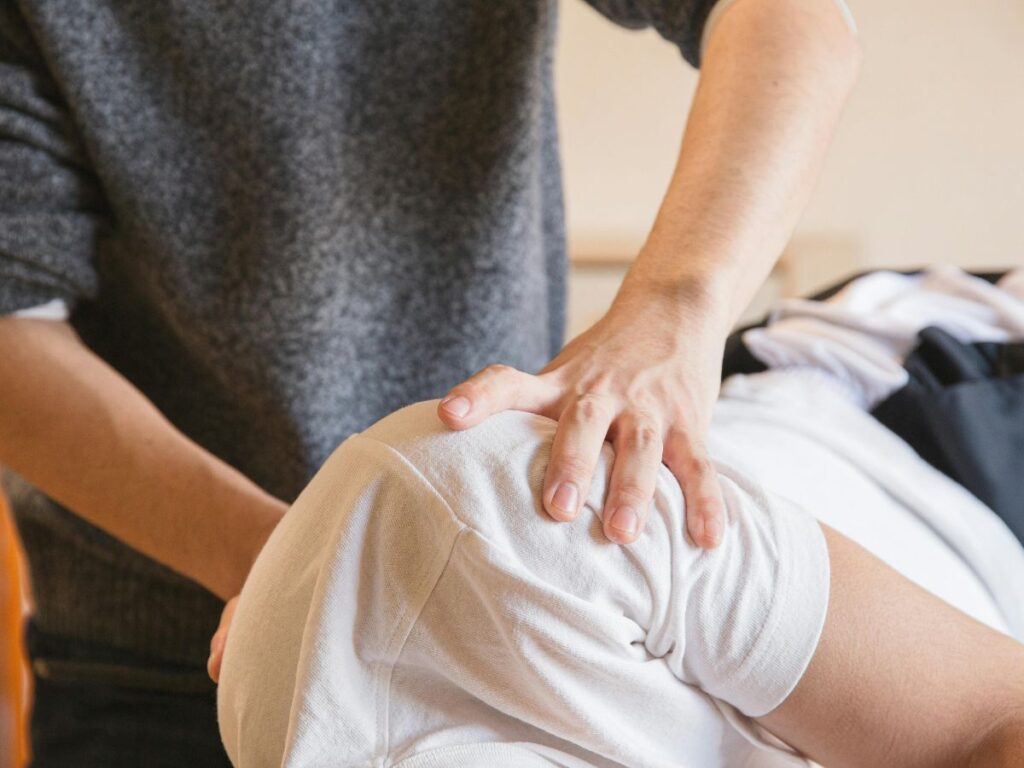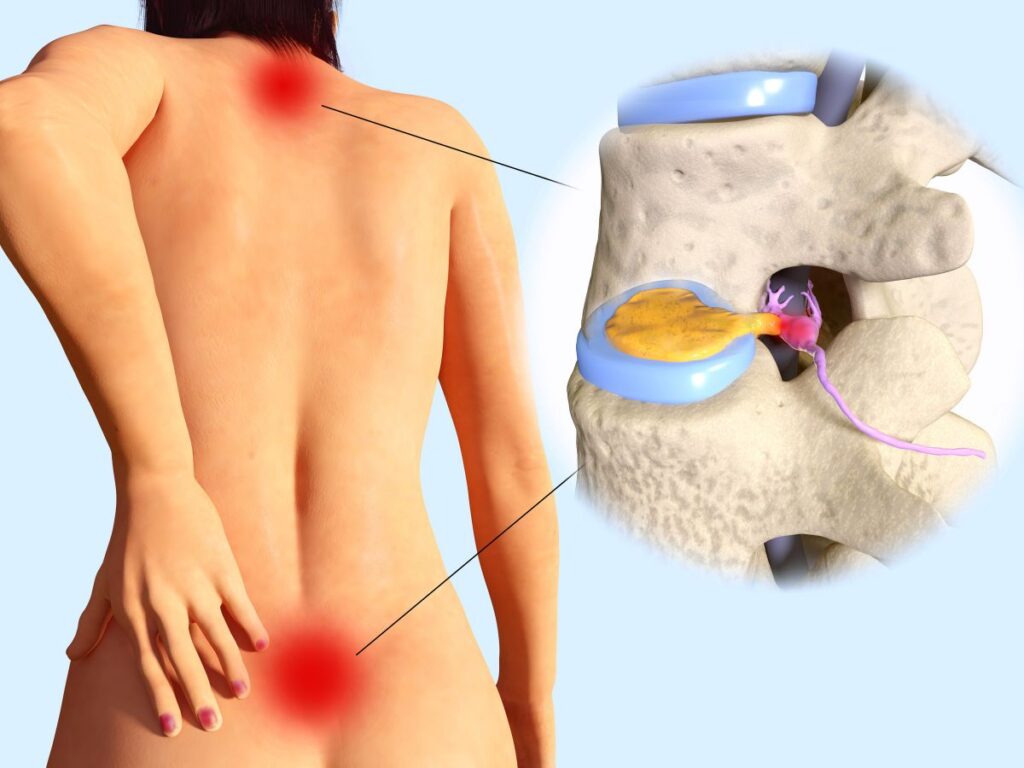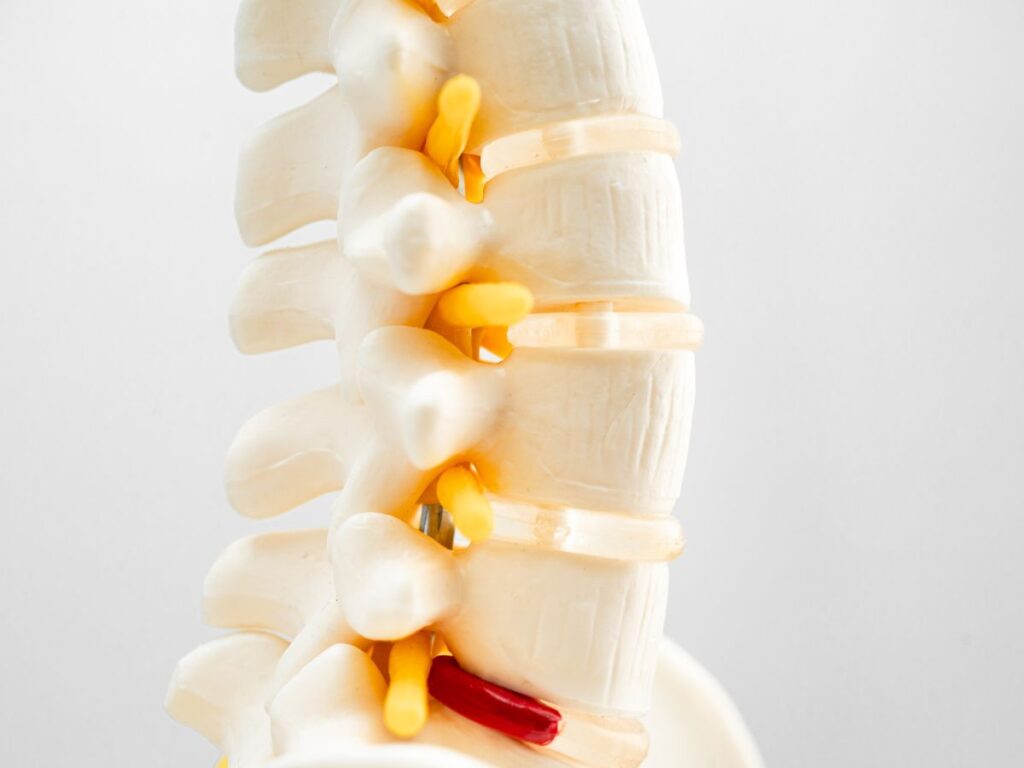Why Chronic Pain Needs Decompression
Chronic back pain can signify long-standing disc compression, persistent nerve irritation, or muscular imbalances that defy short-term remedies. Spinal decompression therapy delves into these mechanical depths, systematically creating space between vertebrae so discs can rehydrate and tension subsides. Unlike sporadic painkillers or fleeting massages, decompression addresses the structural root, giving battered tissues room to recover. Coupled with Dr. Elham’s comprehensive viewpoint—posture, core strength, and possible chiropractic adjustments—this approach lays the groundwork for enduring change, gradually replacing prolonged aches with a balanced, resilient spine.
Common Drivers of Chronic Back Issues
Recurring strain—like repetitive lifting or poor posture—gradually compresses discs, spurring micro-tears that never fully heal. Degenerative disc disease or arthritic changes can narrow spinal canals, intensifying nerve friction. Past trauma—be it a fall or auto accident—might scar tissues around the spine, fueling stiffness that accumulates daily. Stress often amplifies muscle tension, compounding underlying disc or nerve compression. Decompression therapy counters these chronic inflaming forces by gently stretching the spine, revitalizing worn discs, and dislodging the low-level but unrelenting compression fueling persistent discomfort.
The Decompression Technique
Therapy unfolds on a traction table, where a harness around the hips secures the lower body. In carefully calibrated cycles, the machine applies gentle pull, then relaxes, coaxing vertebrae apart. This negative pressure effect draws nutrients into discs, fostering cellular repair over time. Unlike abrupt manipulations, decompression prioritizes gradual, rhythmic expansions that suit sensitive spines. Dr. Elham tailors settings to the severity of your chronic pain and the location of disc or nerve involvement, ensuring each session contributes steadily to improved spacing and reduced inflammation.
Dr. Elham’s Extended Perspective
While decompression mitigates mechanical compression, Dr. Elham investigates additional factors perpetuating chronic pain. A misaligned pelvis or upper back might intensify lumbar or cervical disc loads. If muscle groups—like the hip flexors or pectorals—are overly tight, they tug the spine off-center. After the traction cycle, Dr. Elham may apply subtle chiropractic adjustments, unlocking subluxations that hamper full decompression gains. Strengthening or posture advice ensures daily habits don’t re-compress discs. This synergy broadens decompression’s impact, making each session a leap toward a pain-free baseline rather than a brief respite.
Benefits for Persistent Back Pain
Integrating traction therapy yields multiple rewards:
- Structural Alignment: Less disc compression fosters balanced posture and disc spacing, reducing nerve stress.
- Less Pain Meds: With mechanical correction, ongoing reliance on analgesics often decreases.
- Disc Recovery: Hydration reintroduces resilience to discs battered by months or years of misuse.
- Noninvasive Alternative: Many skip surgical routes, benefiting from gentle traction sessions instead.
- Longevity of Results: Solid posture, strong muscles, and rejuvenated discs maintain improvements in daily life.
Over repeated visits, these benefits compound, making chronic back pain less a dominating fixture and more an afterthought as healthy spinal function reemerges.
Retaining Advances Post-Therapy
Between decompression sessions, Dr. Elham often prescribes micro-lifestyle tweaks to lock in progress. Simple core exercises—like dead bugs or side planks—reinforce the spine’s base, stopping vertebrae from collapsing under routine tasks. If slouched posture is part of the problem, mindful sitting and occasional desk adjustments prevent renewed disc squeezing. Gentle daily walks or swimming keep the back flexible without pounding. By diligently adopting these patterns, you cultivate an environment that nurtures decompressed discs, boosting the therapy’s cumulative effect and diminishing the likelihood of sliding back into chronic ache.
Facing Activity Barriers
Chronic back pain can discourage even basic motions—like bending down, carrying groceries, or maintaining a stable stance for more than a few minutes. Decompression alleviates the nerve irritations or disc swelling fueling that ongoing dread. Dr. Elham follows up by reviewing your movements, offering step-by-step guidance to reintroduce tasks safely—perhaps alternating sides when lifting or spacing out heavy chores. Athletes might pivot to lighter training volumes or cross-training until discs adapt. Over time, daily living transitions from nerve-wracking to manageable, letting you recapture independence that chronic pain once stifled.
Consequences If Unaddressed
Unrelenting back pain can erode mental well-being, inviting depression or anxiety as physical tasks become burdensome. Prolonged disc compression also risks herniations or advanced degenerative damage, possibly needing surgical solutions later. Sleep disruptions, weight gain, and muscle deconditioning often follow, trapping patients in a downward spiral of discomfort. By intervening with spinal decompression early, you short-circuit these outcomes, granting discs a path to recovery and the body a chance to regain overall vigor. Each traction session peels away layers of chronic strain, ensuring the spine’s resilience endures.
Typical Decompression Session
Before therapy, you discuss your pain trajectory with Dr. Elham, noting any changes since the last visit. Harnessed onto the table, the machine applies traction gently to your back, then releases, repeatedly. The sensation feels more like a gradual stretch than a jarring pull. After 20-30 minutes, Dr. Elham may perform low-intensity chiropractic adjustments or share posture cues to sustain the fresh decompression. Over multiple sessions, the once-brittle discs regain their cushion, enabling nerve roots to function normally and dulling chronic aches that once dictated your daily schedule.
Reclaiming Your Life from Chronic Pain
Spinal decompression for chronic back pain underscores that lasting relief demands mechanical correction, not fleeting symptom band-aids. As discs decompress and rehydrate, you’ll sense incremental improvements—a bit more mobility here, a subtle reduction in stiffness there. Dr. Elham’s integrated approach cements these steps forward, reinforcing each traction gain with chiropractic alignment, muscle fortification, and lifestyle guidance. In time, that entrenched back ache transforms into manageable background noise or even vanishes, liberating you to engage in favorite activities without the perpetual shadow of severe discomfort. Embrace decompression’s safe, constructive route, and open the door to a spine that supports a vibrant, pain-limited life.






